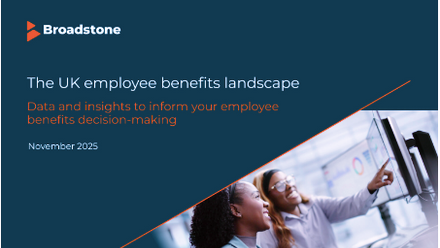10 steps to an exceptional employee wellbeing programme

There's a good chance your company already has some sort of wellbeing programme. But are employees participating? And if they are, do they enjoy participating? Is their participation actually accomplishing anything?
Research has shown that despite all the money companies are pouring into wellbeing programmes in an effort to reduce health care costs, they are not getting much of a return on their investment. Companies are trying to communicate the message that they want employees to be aware, responsible and accountable for their health, while all employees hear is that their employers view their physical fitness as a health risk and want to limit loss of productivity through employee absence.
These conflicting messages are creating resentment between employees and their employers, and torpedoing the success of wellbeing programmes. Combine that with the outdated programmes most companies rely on, and you have a “solution” that can create more problems than it solves.
The ideal message for employees to hear is this: My employer values my personal wellbeing and has provided resources, encouragement and an environment for me to make healthy choices at work.
Here are 10 steps that will help you communicate that message:
1. Evaluate the health of your workplace
People are spending more and more of their life at work – and that is in turn having more of an impact on their wellbeing. Work can positively or negatively affect not only someone’s overall health, but also their family life, social life, weight, eating habits, sleeping habits and stress levels.
So, take a step back and examine how your company is affecting your employees’ lives. Is your organisation healthy or is it stressful? In a study on how workplace stress affects health costs, researchers identified ten stressors that companies can alleviate to improve employee health: lack of health insurance; shift work; long working hours; job insecurity; work–family conflict; low job control; layoffs and unemployment; high job demands; low social support at work; and low organisational justice.
To start addressing these stressors, ensure that your employees are receiving fair compensation, adequate paid time off, health insurance and have balanced workloads. If these issues are not taken care of first, a wellbeing programme will just be a small bandage when surgery may be required.
2. Involve all employees in the planning process
Wait a minute—involve ALL employees? Yes, hearing the voice of all your employees is critical for improving culture and climate. There is more trust, buy in and engagement when employee concerns are heard. Even if their feedback ends up being rejected, they feel valued that it was even considered. Employees do not feel valued or heard if they can’t trust the decisions made by leaders or a faceless HR committee. Here’s how to involve employees in the wellbeing planning process:
- Create a wellbeing committee with a cross-section of employees who can offer a variety of insights. HR only sees a small part of what is going on in your organisation. By inviting those that work in areas such as production, customer service and marketing to sit on your wellness committee, you’ll create a dynamic programme with vast appeal.
- Hold forums or town halls as you begin unveiling your programme. Ask employees for their input and take that input under consideration. Show employees how you have listened to them by giving them updates on changes to the programme.
- Offer a way that employees can continue to share their ideas and implement those ideas. Whether it’s an old-school suggestion box or an online survey, your workforce will come up with bigger and better ideas than a small committee ever could. By listening to this constant feedback, your wellbeing programme will never become stagnant.
When your employees are involved in the process of creating your wellbeing programme, they will feel a sense of ownership and become champions of it. Increasing adoption and participation is much more simple when you have built-in, invested ambassadors in the form of your own employees.
3. Make your wellbeing programme voluntary and transparent
You might be saying, “If we want to increase programme participation, shouldn’t we be making participation mandatory?” And the answer is a resounding NO!
When you build a programme that employees want to participate in, then they will do so willingly and cheerfully. But when you have a one built on manipulation and pressure from the top, then employee participation will only be half-hearted and morale will drop.
Additionally, many employees may not want to participate because they are wary of handing over their health data. This is a valid concern, as privacy issues continue to rise. Whether you are handling the data yourself or using a vendor, ensure that employee data is protected with the highest security standards.
4. Use rewards, not punishments
Many traditional wellbeing programmes require employees to undergo a biometric screening and if they don’t do it, or if their body mass index (BMI) is too high, they are called up about this. Newer models in some regions are implementing fees, such as a raise in health insurance premiums, when employees don’t accumulate a certain amount of points. These outdated punishment tactics are demoralising and ineffective.
Your wellbeing programme shouldn’t punish employees for their health status. This only stresses people out, defeating the entire purpose of a wellbeing programme. Instead, celebrate your employees’ accomplishments by rewarding them with a payroll deposit, or a points deposit redeemable for rewards. Many companies who use a points-based approach also allow these points to be combined with those received from other types of corporate recognition.
5. Increase access to healthcare
It’s hard for employees to manage their own wellbeing when they don’t have any sick days to use to rest during an illness. The bare minimum of having a healthy workforce is having a generous sick leave policy and not punishing employees when they need to use it.
To create a culture of health, discourage employees from working when sick to prevent the spread of germs. This requires management telling employees not to come in sick and leading by example. If managers work when they are sick, employees will take it as a sign that they are expected to do the same.
Think outside the box and consider placing an onsite health clinic at your office. By enabling employees to consult with a doctor without waiting weeks for an appointment, they get a jumpstart on their health.
6. Be inclusive and thoughtfully consider all populations of your staff
As you get your programme rolling, keep talking to your wellbeing committee about proposed programme initiatives. Make sure the committee consists of a diverse group of employees, so that they can raise any red flags about issues you haven’t considered. Think about these scenarios:
- You might think that hosting a walking challenge is a great way to get your staff moving, but stop and think about your disabled employees that may not be able to participate. Before holding a company-wide initiative, make sure it’s something that everyone can participate in, or find out how you can accommodate those with special needs.
- A weight loss competition seems like a fun and appealing challenge for everyone. But more and more research is showing just how damaging our obsession with weight loss is and how triggering such a competition can be to anyone struggling with an eating disorder. This is one competition best kept out of the workplace.
- Before you overhaul the snack system in the break room, take a minute to think about the dietary restrictions of your staff. Religious and health needs should be considered, such as kosher and gluten-free diets.
Our Global Culture Report found that, when an organisation’s culture is inclusive, employees are:
- 68% more likely to believe they can be their authentic self at work
- 85% more likely to agree their team knows the “real me”
- 68% more likely to take time to get to know colleagues personally
- 141% more likely to feel a sense of belonging
- 117% more likely to feel enriched by the people they work with.
7. Invest in workplace changes that integrate with people’s lives and reduce stress
As work-life integration becomes the norm, employers need to carefully consider what structures they have in place because they are effective and which ones exist simply because it’s always been done that way.
For example, is a strict 9 to 5 schedule 100% necessary? A flex schedule may be incredibly welcome by your employees. By giving employees the flexibility to come in a little later or leave a little earlier as needed, they have the ability to accomplish their work as needed while still having the time to take care of personal matters.
Another option is to consider remote work. Remote work gives employees the flexibility to work from home or another location, without the distractions of the office. If it’s not possible to make a position fully remote, giving an employee one day a week to work remotely or even as needed can boost productivity. Remote employees also have more direction over the integration of their home and work lives.
In our 2018 Global Culture Report, we found that when employees have control over the integration between their work and personal lives, companies see:
- 53% increase in satisfaction with employee wellbeing at their organisation
- 30% less stress at work
- over three times less likely to believe they frequently miss important things because of work obligations.
8. Provide room for collaboration, play and relaxation
Your employees are working hard every day to drive your company forward. Keeping up that pace forever is unsustainable. So give them physical and mental space to reflect, take a break and engage with each other.
Employees want workspaces that allow for a variety of work styles. This keeps employees productive and they can move throughout the day to new spaces that suit their needs: from their own desks when they need to focus, to rooms with boards and shared screens for collaboration, to communal spaces where they can have impromptu meetings and build camaraderie, to personal spaces where they can hold private conversations.
9. Take a holistic approach to wellbeing as you think beyond physical needs
Wellbeing is more than exercise and counting calories. Not all employees need to work on their physical health. If your wellbeing programme is just a one-size-fits-all checklist, not all employees’ wellbeing needs would be met. With varied programmes and activities, employees are able to personalise what wellbeing means to them.
Consider all the many wellbeing needs of your employees and how they affect their lives and performance. This includes financial, mental, emotional, social, spiritual and professional health. Each of these areas are important to your employees’ wellbeing, so consider them separately and thoughtfully.
10. Promote social connections for stress relief and support
Everyone in your organisation is at different stage of their life, with different goals and they all need different types of support. By promoting interest and support groups, employees can meet with those that are focusing on similar goals.
Leading wellbeing software solutions offer employees the flexibility to determine their own areas of interest, create their own groups to attract other interested peers and take greater control of their wellbeing journey. These groups don’t have to be just weight loss or walking groups. Attending a dinner or book club are also healthy habits employees can be pursuing. In fact, these social ties have been shown to improve health, increasing longevity by 50%.
Find ways to include your employees’ family and friends in your wellbeing programme. When you hold activities, such as mental health lunch and learns, self-defence workshops, and CPR training, encourage employees to invite a loved one.
Building connections to community is a sustainable habit that combats loneliness and relieves stress. Within your organisation, you can also consider offering company networking events, a formal mentorship programme and offering a donation for employees’ volunteer time. Each of these actions shows employees that you are invested in their professional and social wellbeing.
Learn more about how your wellbeing programme can move beyond mere participation to drive a culture of wellbeing here.
The author is Kerry Drury of OC Tanner.
This article is provided by OC Tanner.
Supplied by REBA Associate Member, O. C. Tanner
Giving teams the integrated tools they need when, where and how they need them.







